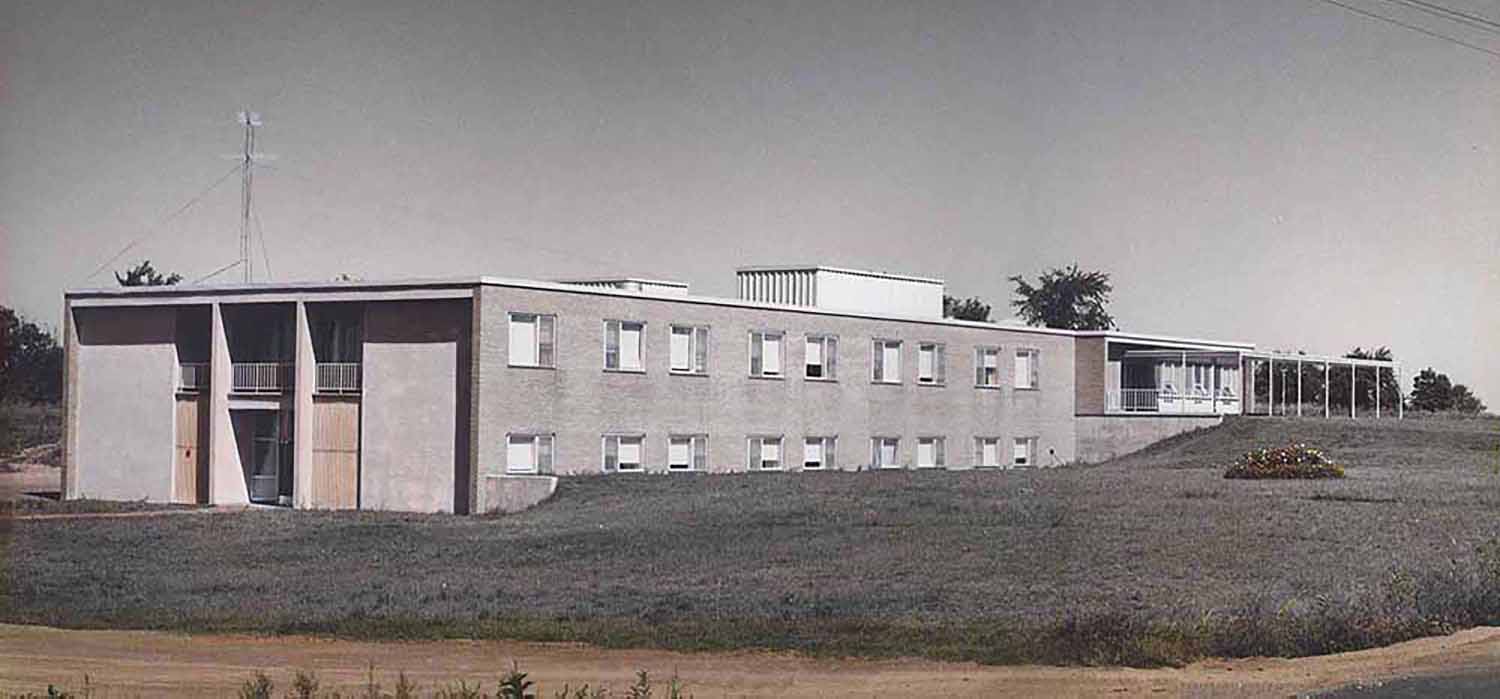

History of Kemptville District Hospital
Kemptville District Hospital has a rich history, steeped in community spirit:
Kemptville District Hospital (KDH) opened its doors on June 29, 1960. The hospital began as an idea decades earlier; there were at least three prior attempts to establish a hospital locally.
In 1939, the Red Cross planned to set up a 10-bed hospital based in a private home, but town council at the time didn’t support the idea. Then, in 1946, the Rotary Club spearheaded a hospital drive, but without success. Nearly 10 years later – in 1954 – a small group of business owners recognized the urgent need for a hospital. Within months of their application, they received letters patent from the province and a charter to build and operate a hospital. Due to a lack of finances, the project stalled again.
The final – and successful – push to build a hospital in Kemptville started with our neighbours at Winchester District Memorial Hospital (WDMH) in 1958. At the time, WDMH – itself a small, rural hospital – no longer had the capacity to care for residents of Kemptville. As thousands faced the possibility of not having access to a nearby hospital, there was a resounding call to action to build KDH.
A committee was formed to select a provisional hospital board and G.A. Brakely and Co. (Institutional Consultants) was retained to organize the fundraising campaign. Over 400 residents attended a public meeting and voted to build. A temporary hospital committee was created, including five of the eight members of the provisional board.
By mid-May 1958, Balharrie, Helmer and Morin Architects of Ottawa had been engaged and proposed a $500K project. The United Counties of Leeds and Grenville pledged $50,000 and $168,000 was promised in other government grants to build a hospital. A six-day ‘Blitz Canvas’ in June raised $282,800 – over $30,000 more than its goal and the equivalent of more than $2 million today – with help from service clubs and the community. The Kemptville Advance called it ‘a magnificent display of community spirit.’
Local doctors also championed the idea to build KDH, including Beamish, Flay, Wilson and Jones. (Dr. Denis Jones was known to many; for more than 50 years he treated generations of Kemptville area families, passing away in 2019 at the age of 91.)
In early August of 1958, plans were approved by the Ontario Hospital Services Commission, and by the end of September, the six-acre site for KDH was purchased. Construction tenders went out on November 10, with the sod turning held the following day. In January of 1959, the construction contract was awarded to H. J. MacFarland Co. of Picton.
That same month, Margaret Storey – Registered Nurse (RN) and chair of women’s activities for the temporary hospital committee – issued a call to form an Auxiliary. Approximately 750 members signed up and the Auxiliary members worked tirelessly; raising money for medical equipment through bake sales and dances, while also supplying and repairing bed linens, towels and curtains for the hospital.
The KDH Auxiliary predates the hospital and held its first Hey Day – a fundraising sale with humble beginnings that is now one of Eastern Ontario’s largest indoor garage sales – in 1959. Hey Day has been held in Kemptville annually for the past 65 years, except in 1967 (Canada’s Centennial year) when the arena was being demolished and three years during the Covid-19 pandemic (2020, 2021 and 2022).
By May of 1959, the concrete foundations for KDH had been poured, and by June, basic plumbing was in place. The first storey was completed in September, and in November, as winter approached, the furnace and elevator were installed.
KDH’s first Administrator, Marjorie Hawkins, RN, was hired in January of 1960. Her long nursing career included the experience of serving for four years as a Nursing Sister Officer with the Royal Canadian Army Medical Corps in Bruges, Belgium during the Second World War. She would lead KDH with great fortitude for its first 15 years.
By February of 1960, escalating construction costs demanded an additional fundraising campaign totalling $147,000. Because the community had already given so generously, this supplemental campaign was aimed at corporations that did business in the area, which rose to the occasion in support of KDH, including the local dairy industry.
In March, the first Board of Directors was installed. The great day finally arrived on June 29, 1960, when KDH opened its doors for the very first time. The ribbon cutting was performed by Dr. M. B. Dymond, then Ontario Minister of Health, and Hawkins. Over 2,000 visitors took guided tours that day, organized by Lois Latimer, the first full-time RN hired by Hawkins. Visitors were keen to see what had been described in the Ottawa Citizen as ‘the castle in the sky’ and ‘one of the best-designed, most modern hospitals in Canada.’
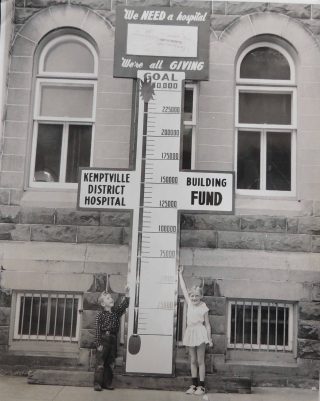
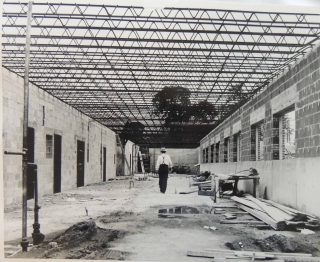
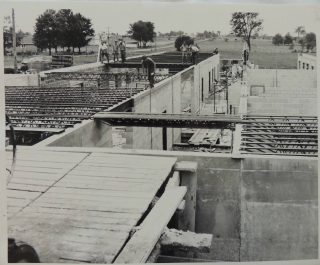
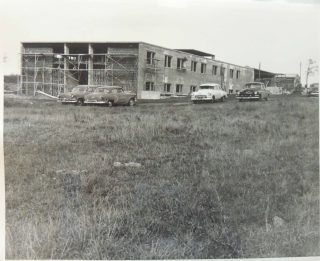

A year later – in 1961 – a significant milestone occurred in health care with the introduction of Ontario Hospital Insurance (now OHIP). No longer did patients have to pay $20.10 per day for their hospital stay; hospital care was now accessible to all.
In 1964, Hawkins triumphantly led KDH to its first accreditation; it was the smallest hospital in Ontario at the time to achieve this significant accomplishment.
Before long, the hospital outgrew its space and another sod-turning ceremony was held on December 6, 1967. KDH’s first addition included an Emergency Operating Room (OR), Physiotherapy Department, X-ray room, and Sunroom for patients upstairs. The new wing was officially opened on April 26, 1969, again by Dr. Dymond, who unveiled a plaque with Honorary Chair W.B. George and Board Chair Mike Kotlarchuk. Hawkins unlocked the door to the new wing and more than 300 guests were given guided tours by KDH’s new candy stripers.
The Kemptville District Hospital Foundation (KDHF) was formed in 1979 to support KDH by fundraising for essential medical equipment not provided for by government funding. One of the Foundation’s many champions was the late Harry Pratt, who passed away in 2015. In the spring of 1989, Pratt – then Chair of the Hospital’s Board of Directors – helped launch the opening of the Public Health Unit office, which was constructed at the north end of KDH.
The following year saw the closure of the KDH Obstetrics Ward. It’s estimated that 3,000 babies were born at KDH over the decades, but the number of deliveries over the course of a year had dwindled to just 25 before the program was closed.
In 1998, when the Great Ice Storm hit Eastern Ontario, the hospital assumed a leadership role in the community, running its generators at full tilt and providing a warm haven of safety and security, along with hot meals for community members.
In 2002, looking beyond the hospital walls, the KDH Board decided to build the 7,000 square-foot KDH Health Centre across from the ER to bring more family physicians to Kemptville.
As the community grew, so did KDH: a new two-storey wing was planned to house a state-of-the-art Emergency Department (ED) and Diagnostic Imaging (DI) suite on the lower level, and state-of-the-art operating rooms, surgical day care centre, and additional inpatient beds on the upper level.
In 2004, the KDH Foundation launched its ‘Lean on Me’ capital campaign to raise $5 million for this major project. The community responded with an outpouring of support, just as they did in 1958! The KDH Auxiliary also pledged $100,000 for the new mammography technology.
The groundbreaking ceremony took place on May 29, 2009, followed by the grand opening on September 29, 2010. The late Gerald Tallman, who passed away in 2021, was Chair of the Foundation’s ‘Lean on Me’ campaign that raised more than $5 million for the hospital. He was joined by members of his family to cut the ribbon at the entrance to the new ER that bears the Tallman name.
The new addition resulted in new opportunities and partnerships; in the fall of 2011, KDH became one of just a handful of small hospitals in North America to perform total joint replacement surgery. In 2012, KDH achieved Accreditation with Exemplary Standing, Accreditation’s Canada’s highest rating.
In 2013, the KDH Auxiliary celebrated a significant milestone: its total financial contributions to the hospital since its founding in 1959 topped $1 million, thanks in large part to Hey Day.
KDH opened its Convalescent Care Unit in 2013; a short-stay rehabilitative program that allows members of the community to recover close to home.
During the 2016 Accreditation process, KDH was again awarded Exemplary Standing, this time with an unprecedented perfect score! This meant that the hospital met 100 percent of the nearly 2,000 criteria used to measure the quality of care and services.
In 2017, KDH opened its new clinic wing on the upper level, where 4,000 square feet of underutilized space was modernized to double KDH’s array of outpatient services and attract more specialists to Kemptville, thanks again to support from the community through the KDH Foundation.
In 2025, after another incredibly successful multi-year fundraising campaign by the KDH Foundation, the hospital celebrated the grand opening of the Tallman Family CT Scanner Suite. Louise Tallman, wife of the late Gerald Tallman who championed the ED and DI expansion project years earlier, led the Foundation’s Crossroads Campaign as Honorary Chair. She cut the ribbon alongside Frank Vassallo, KDH CEO, on June 25, 2025.
KDH is so grateful for every single family, individual and business that has supported having a progressive and innovative hospital in our community, including the Norenberg and Perry families. After nearly seven decades, KDH still stands as a treasured testament that anything is possible when you work together.
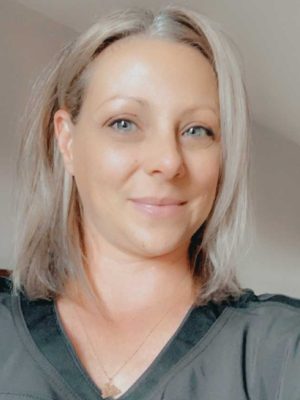
Open ProfileStaff ProfileNadia RobinsonPatient Registration/Health Records Clerk
Read Profile59,277
total number of patients seen at KDH last year
Find a Clinic or Service
“My two-year-old daughter and I were in the KDH emergency department last night and we were gifted the sweetest little knitted doll. It really made all the difference to my daughter. I would very much like to thank the people that make the dolls and donate to their supplies, and am wondering if it’s possible to get the name of the person who knitted this one so we can name it after them.”

